What would entice a small-island girl from Grenada to fly all the way to southern Oregon to live in a cabin in the woods for 3 months? Birds, of course! Seeing birds, hearing birds, and the coolest opportunity of all: getting up close and personal and banding birds. Here is how it all went down:
Last summer, at the end of July, I ventured out to Oregon to join the Klamath Bird Observatory (KBO) for a 3-month long bird banding internship. This internship was a follow-up to BirdsCaribbean’s Bird Banding Workshop in The Bahamas, which I was fortunate to attend.
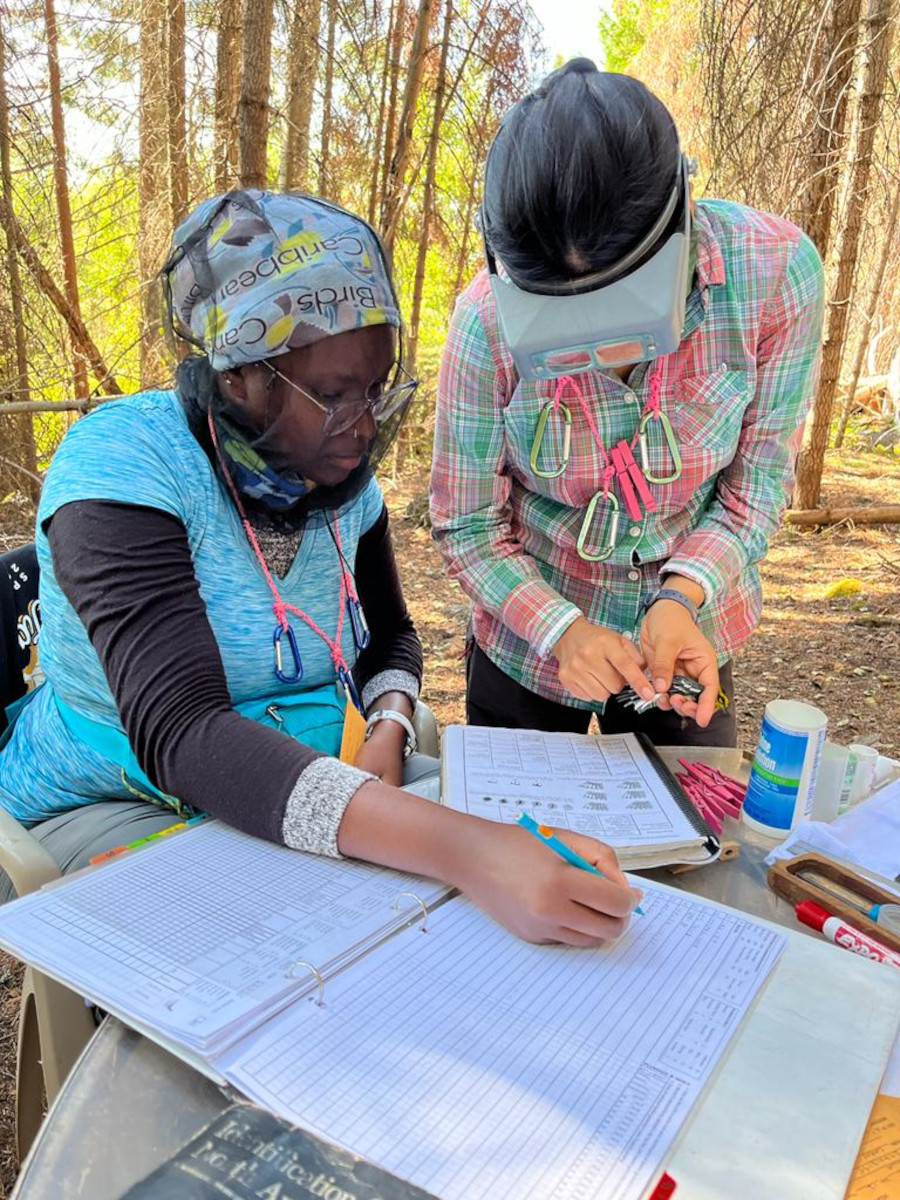
This was where I finally—after years of being interested in banding and having witnessed several banding operations—finally began to understand the fundamentals of molt (the process by which birds replace their feathers in a predictable pattern). The Bahamas was great, but needless to say, one does not become a proficient bird bander in 5 days. At the end of that workshop, molt was only just beginning to click for me, and I was eager to learn more and get more hands-on practice with birds.
From Tropical Heat to…Oregon Heat!
So off I went. After a 24-hour-long journey, of which about 12 hours were spent in the air, I arrived in Medford, Oregon, in the midst of a massive heatwave. I definitely did not expect it to be hotter in high-elevation, high-latitude Medford than it was in my tropical home I’d left the day before, but temperatures were indeed over 40°C. The drive to my home for the next few months—a literal cabin in the Upper Klamath woods—was scenic, with sprawling ranches and beautiful forests along the mountain roads. Along the way, I also got glimpses of the Klamath Lake, a small aquatic consolation for this island girl. I settled in quickly, getting to know my housemates and new colleagues over the weekend as we prepared for banding in the coming week.
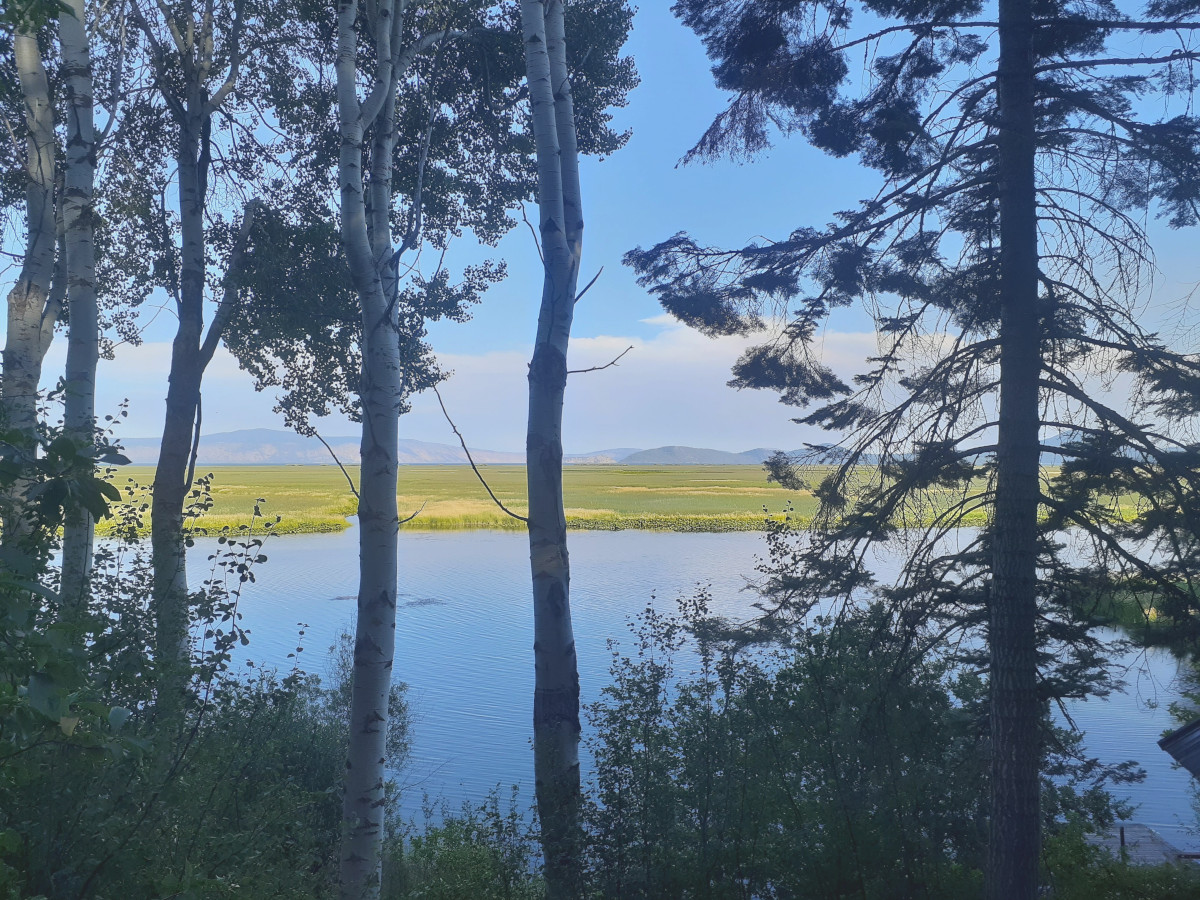
Banding, Day One: A Quiet Start
August 2nd was my very first day of banding, and we were off to a busy start. In some ways, I was thrown into the deep end—immediately incorporated into the crew and put to work as we set up nets and ran the station each morning. However, in other ways, it was a slow burn before I started to get the hands-on practice I craved. My first few weeks consisted of mostly scribing as others banded, observing the operation and flow of the station carefully, and assisting with tasks like set-up and takedown. I flipped a lot of pages looking for reference material in Pyle, the “Bird Bander’s Bible”, and was always ready to shine the spotlight when needed to skull a bird (“skulling” is the process of checking how well-grown a bird’s skull is to figure out its age).
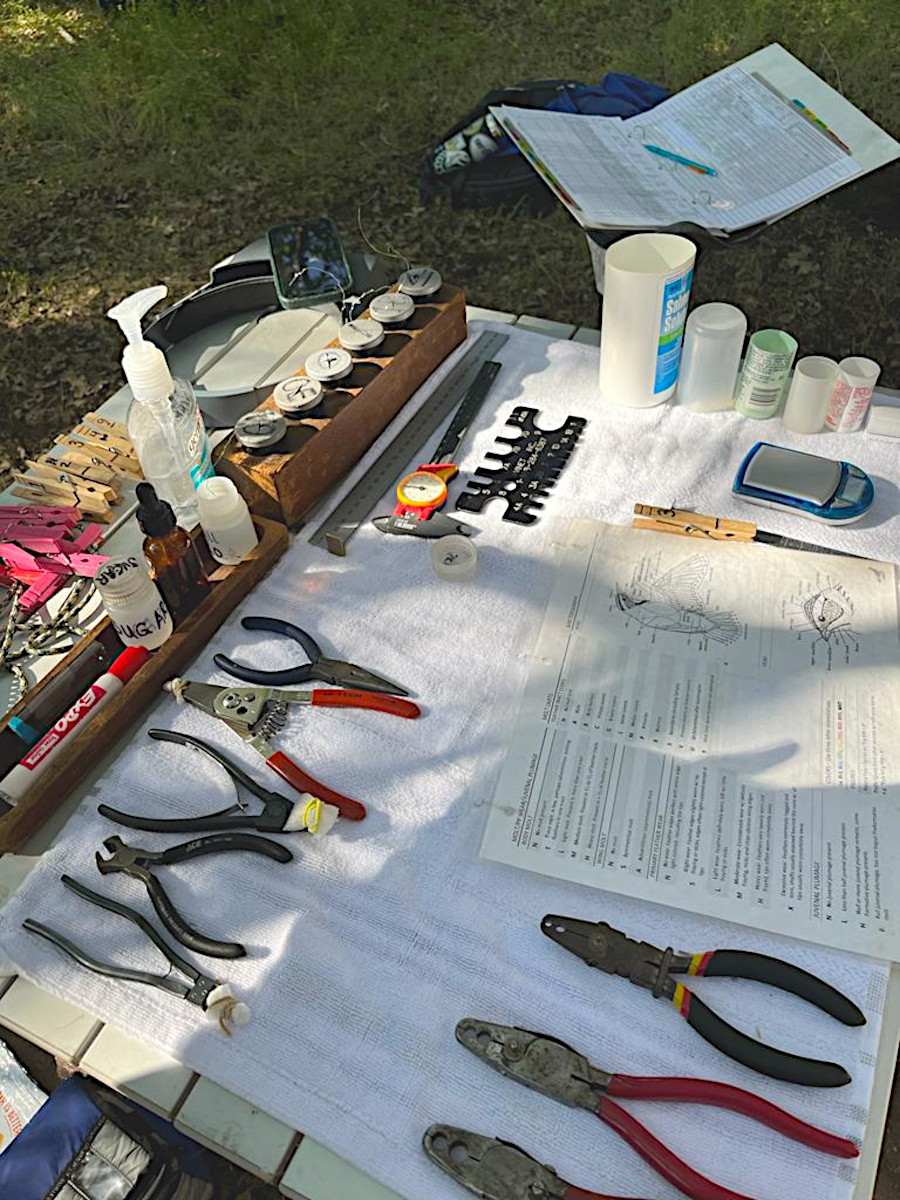
Hands on banding! Holding is Believing…
On August 17th, I banded my first bird at KBO, a Nashville Warbler, and from then, the pace certainly picked up. By October 14th, our last official day of banding, I had been privileged to handle just under 280 birds, whether I extracted them from the net or banded them myself. These 280 birds were of 45 different species, many of which I had never even seen before going to Oregon. I had previously visited the west coast when I briefly lived in Vancouver, B.C., during the pandemic (summer 2020) and did some socially-distanced birding where I saw the usual suspects like Bushtits, Steller’s Jays, and House Finches.
But still, observing the strange behavior of a Northern Flicker on a lawn is very different from holding one in the hand and noticing amazing details like their heart-shaped belly pattern. Nor does seeing a majestic Cooper’s Hawk soar overhead compare to holding it like an ice-cream cone and launching it (safely) into the air after banding it. I feel truly honored to have been so “up close and personal” with so many different birds – and to learn something new and interesting about each of them during my time there.
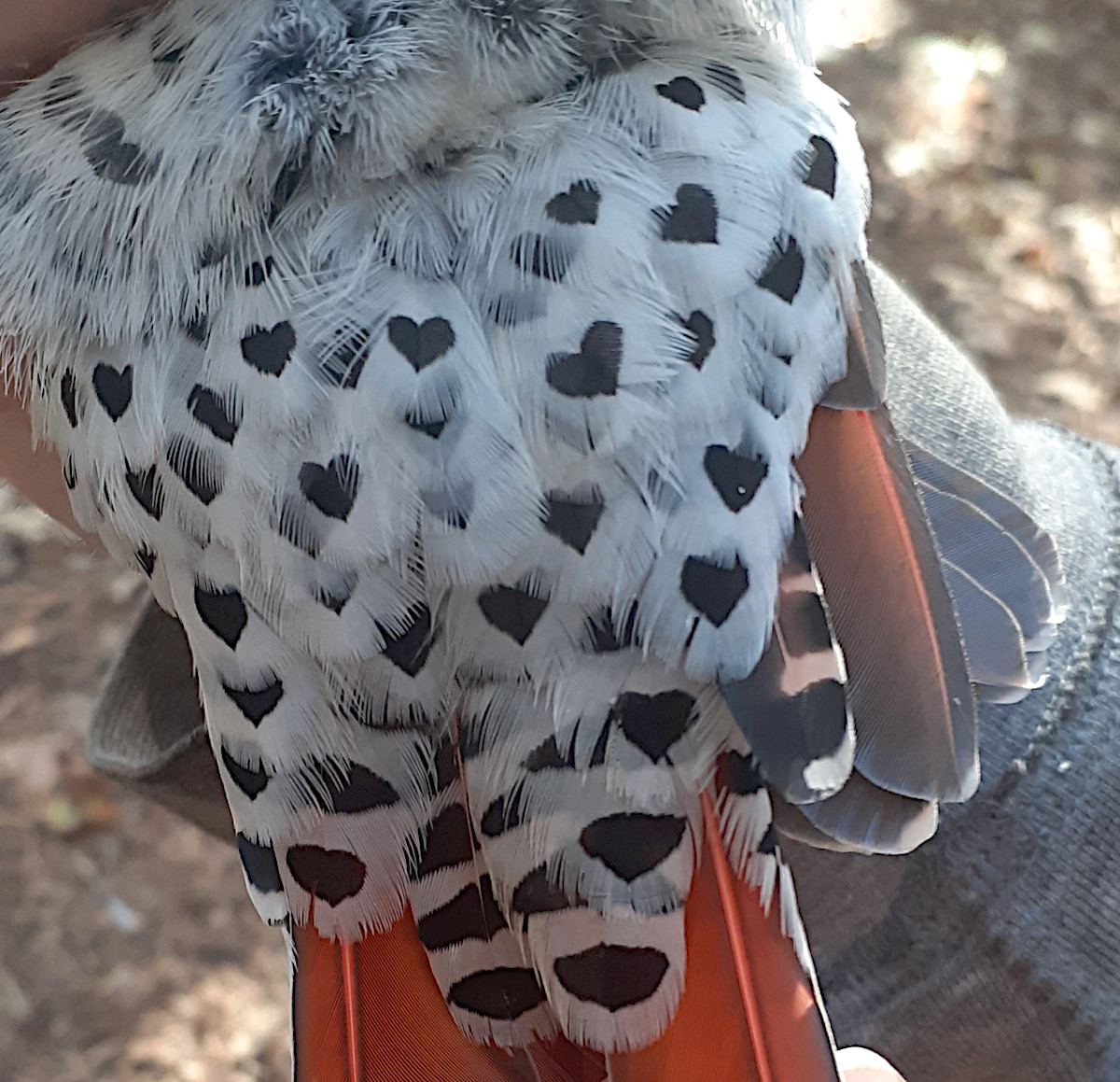
The many skills I learned
Before going to KBO, I had handled and processed a few dozen birds (< 50 total), of tropical species like the Bananaquit, Lesser Antillean Bullfinch, Spectacled Thrush, and Caribbean Dove. These opportunities were primarily in Grenada with the Koper Lab of the University of Manitoba, and more recently, in the Bahamas at the March 2022 workshop. However, I had applied bands to very few of those birds (less than 10) and was only vaguely familiar with proper application technique and the process of aging and sexing.
Throughout my 3-month internship, I learned so much about mist net setup, extraction, proper handling technique and modifications for various sizes of birds, band sizing and application, assessment of molt limits, aging and sexing of birds in the hand, and data management. Since I plan to establish my own banding station in Grenada, these skills are invaluable for me to have as primary bander. KBO also filled the knowledge gaps I had about aging birds, particularly molt, molt limits, and the use of WRP—an updated system of terminology for aging birds based on cycles. The most valuable skill I learned, in my opinion, is skulling, which will be incredibly useful in aging my resident birds in Grenada that potentially have year-round breeding seasons. I am very excited to put that skill into practice at home.
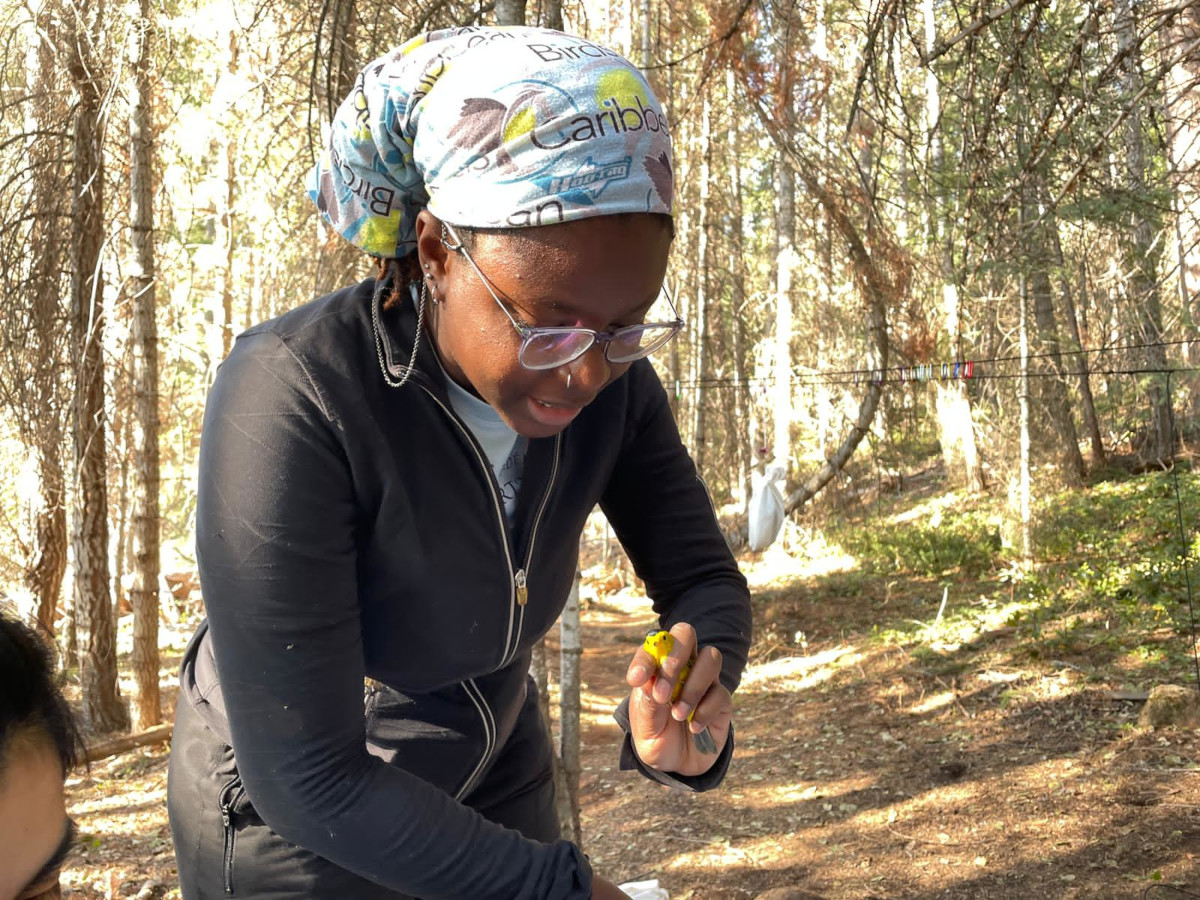
A wooden canoe, and nerdy indoor games
The internship was not all work, thankfully. My crew mates and I had a few opportunities for fun, including making the most of our grocery runs to the nearest town 30 minutes away by thrifting to our hearts’ content—my field wardrobe has nearly doubled, and everything was secondhand! We were granted the use of a nearby cabin on the Klamath Lake, affectionately called “Boathouse,” where we could go kayaking and canoeing through the marsh. Regrettably we only went once before the weather got too cold for unnecessary outdoor adventures, but my first time in a real-life wooden canoe was magical, even though I failed in my quest to see beavers. More often, we huddled up at home in the cabin and played games; one of my crew mates brought quite the collection with him, and nearly every week we had a new board or card game to try out.
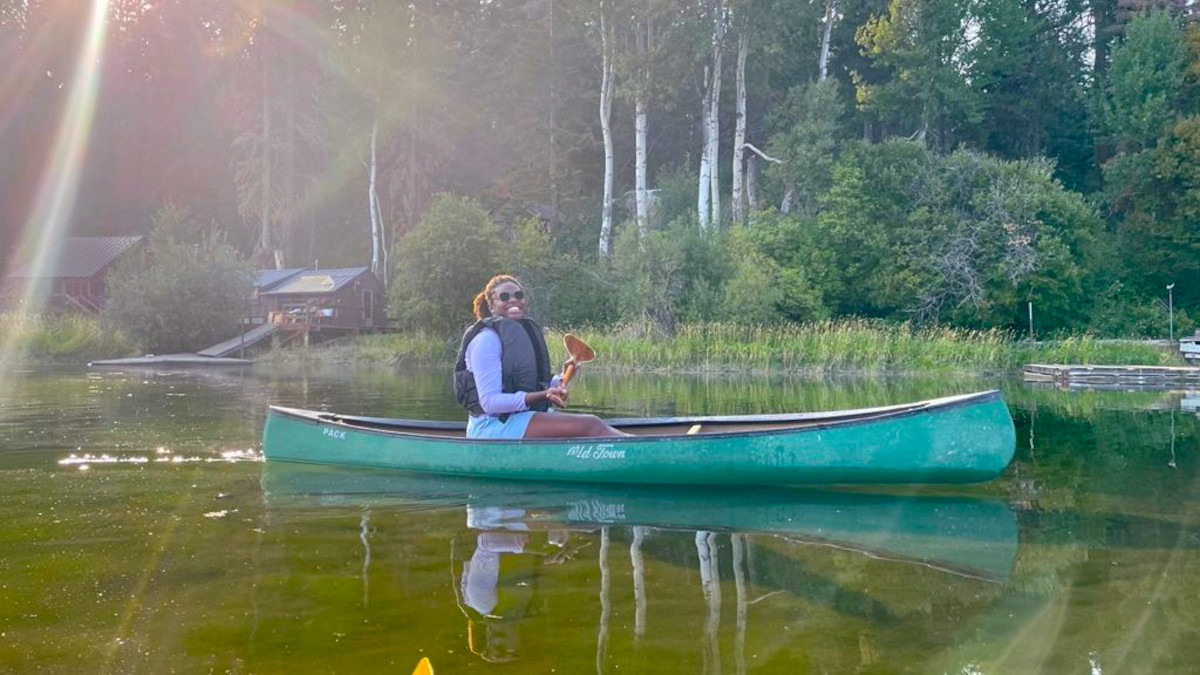
“Wingspan” was an instant favorite, to no one’s surprise, and we adapted the game to double as study time. Each time we drew a bird card of a species that we caught at KBO, we went around the table giving “fun facts” about the species including its band size, molt strategy, and aging/sexing criteria (nerdy, I know!). All of these moments of downtime went a long way in helping the crew to bond and breaking up the monotony of fieldwork with a bit of fun.
An International Flavor, and Some Language Learning
Our crew was also quite diverse. The three Americans—from Illinois, Texas, and South Carolina—were joined by Colombian, Mexican, British, and Grenadian interns, making us one, big, happy international family. For me, the coolest part was hearing all about everyone’s banding adventures in their home countries and states, and all the other places they had worked, from Alaska to Ontario to New York to Costa Rica. It was amazing to know that, even with these varied backgrounds, we had all come to KBO with the common purpose of learning more about birds and banding, and hopefully, getting certified to do what we love.
I grew especially close to the two Latin American interns, who taught me not only about molt in tropical birds—which differs in important and fascinating ways from temperate, migratory birds—but also, so much Spanish. We spoke often as we tried to learn each other’s languages, and while I would not claim to be fluent in Spanish (yet), I do definitely know a lot more about “la muda y la vida ahora.”
Smoke, Bears, Rattlesnakes, Oh My!
Of course, the internship was not without its challenges. Southern Oregon is fire country, and we often had to adjust our plans around fires in the area, and sometimes, work through some degree of smoke. One of the sites is located atop a mountain, and the mile-long hike to get there did not always agree with my arthritic knees. We had to be mindful of bears everywhere—and the crew did have a few close encounters—and keep an eye out for rattlesnakes at one site. I took more than one fall in the field and I have the scars to show for it.
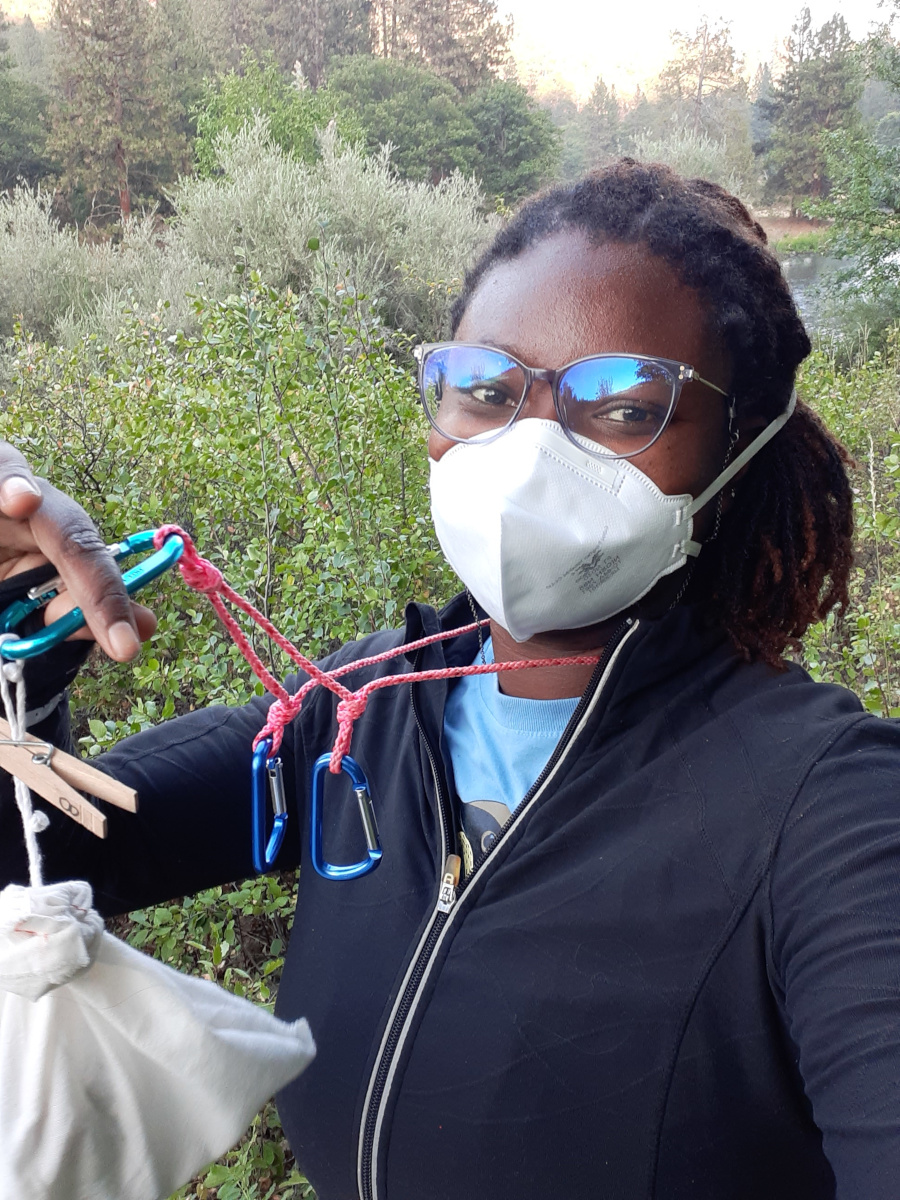
The hours were long, mornings were often cold (sometimes with 0°C starts), and the work was exhausting at times, but the good always outweighed the bad. Not only did we get to work with birds and collect important data for their conservation, but we also got to share that with the public. We had several outreach opportunities, most of which were at the Crater Lake National Park in partnership with the National Park Service, and people of all ages were excited to see us in action and especially excited to help release a bird. I remember my own first time releasing a bird in 2017 with the Koper Lab, and that obviously sparked an interest in me that has brought me here all these years later..
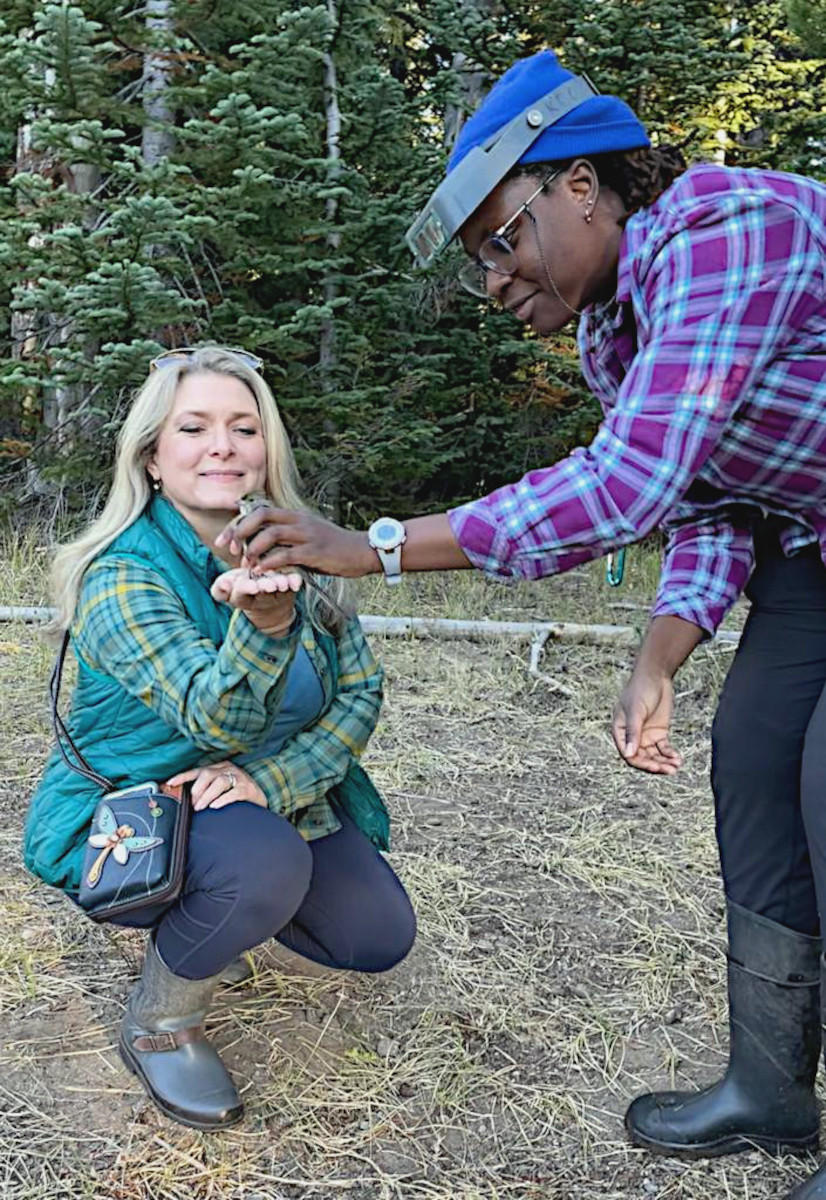
Plus-Delta-Plus: Assessing Our Day
One KBO tradition that I grew quite fond of was our daily check-in of Plus-Delta-Plus (or High-Low-High as our British crewmate sometimes called it). At the end of each banding day, after summarizing our effort and captures, each of us had to identify two things that went well (our pluses); and one thing that maybe did not go so well or an area for improvement(our delta).
Pluses often included progressing in or mastering a certain technique (skulling, anyone?), noteworthy team dynamics and communication, good banding flow and keeping up with the pace of the day. Extra-cool captures of birds, such as the one day we caught and banded a Pileated Woodpecker, were definitely Pluses! Deltas were equally varied, from breakdowns in communication or teamwork to physical stresses or injuries. Deltas often included areas for improvement, such as realizing that we didn’t understand an aspect of molt quite as well as we thought we did. Having a space to reflect on the day, and sandwiching the “bad” with the “good”, was a great way to not only check in with ourselves but also with our teammates. This is definitely a ritual that I would like to incorporate into my own banding station going forward.
Testing, Testing…Certification!
I gained so much knowledge over my 3 months in Oregon, but knowledge is often intangible. One of the few tangible and recognized measures of banding competency (in this Hemisphere) is a certification from the North American Banding Council (NABC). At the end of October, our entire crew got certified as either Banders or Trainers! In full transparency, I did not expect to be able to pass the certification when I started my internship in July, as the big end-of-season evaluation was daunting. I thought I would be at a disadvantage since I was the least familiar with the birds in the area.
The NABC certification process typically includes a written exam, specimen exam, and an intense field session, where you are observed banding-in-action. This system has worked for years, but is prone to inducing nerves and failure, as a lot of pressure rests on just one day in the field. Thankfully, KBO recently implemented a programmatic certification process, which changes the traditional model of testing everything at the end to testing bits and pieces as you go. We used the “Bander’s merit badge checklist” to evaluate important knowledge and skills throughout the fall. Individual skills—like ability to measure a wing formula or correct application of a band—were checked off by demonstrating competence in the field.
These practical tests were spaced over several weeks, and allowed us time to improve and incorporate feedback if we did not succeed on the first try. We still had to complete the written exam, but having continuous evaluation rather than one field test really took the pressure off. Our performance was then independently reviewed by Trainers at the Humboldt Bay Bird Observatory during our visit, and voila, everyone passed! I am very proud to be one of the first NABC-certified Banders from Grenada, and also one of the first under this BirdsCaribbean Landbird Monitoring Program – which is sure to build a lot of capacity throughout the region.
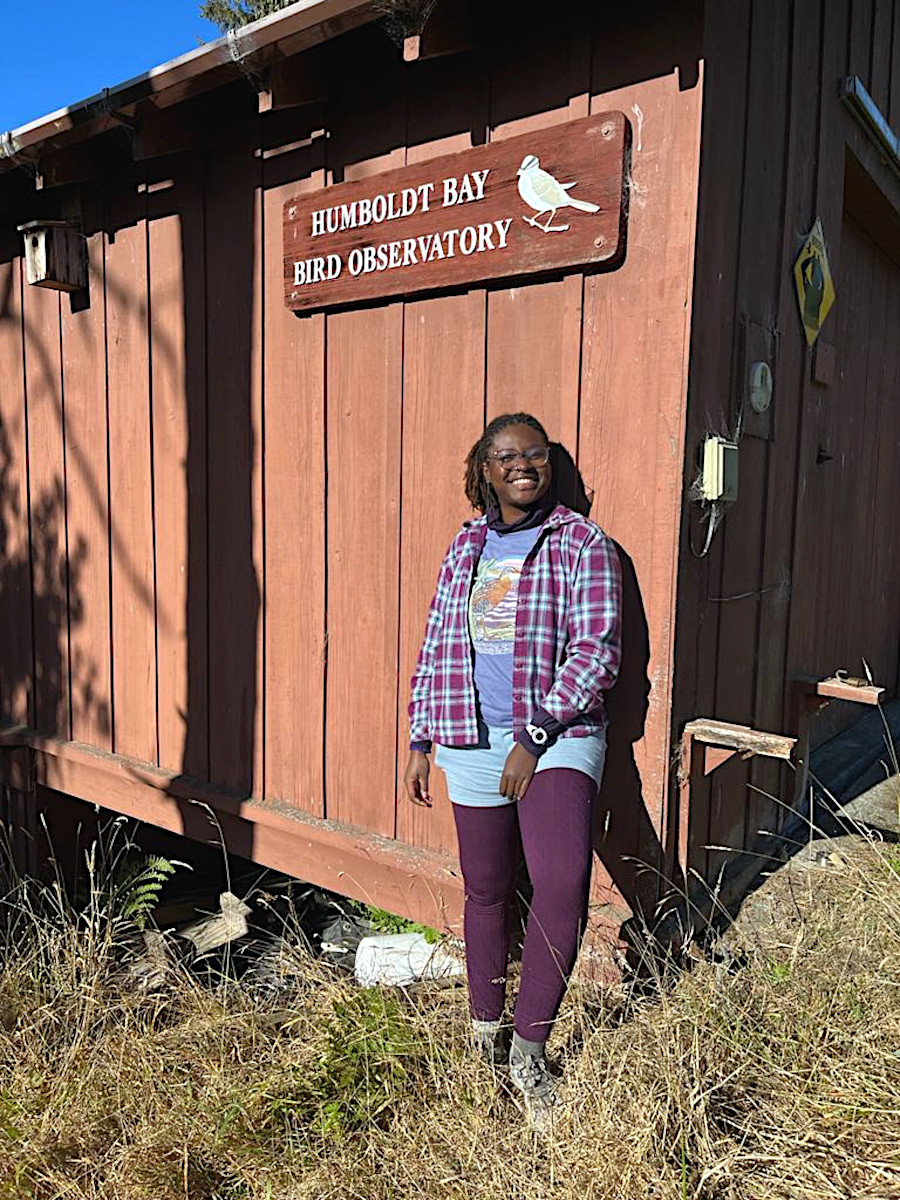
A Weekend in Humboldt Bay
The weekend at Humboldt Bay was the perfect end to the season. It is the banding station of field ornithology legend Dr. CJ Ralph, and our visit coincided with his famed end-of-year party. We arrived on Thursday 20th October after a five-hour drive from southern Oregon to northern California. We spent the day on Friday banding at their station, followed by a bonfire barbeque. The next day there was a mini-conference, where we all presented on various topics related to banding; the keynote was a fascinating presentation on the results of a long-term banding dataset in Brazil. We ended the day with an award ceremony of sorts, and the much-anticipated end-of-year party where we mingled with banders from both observatories.
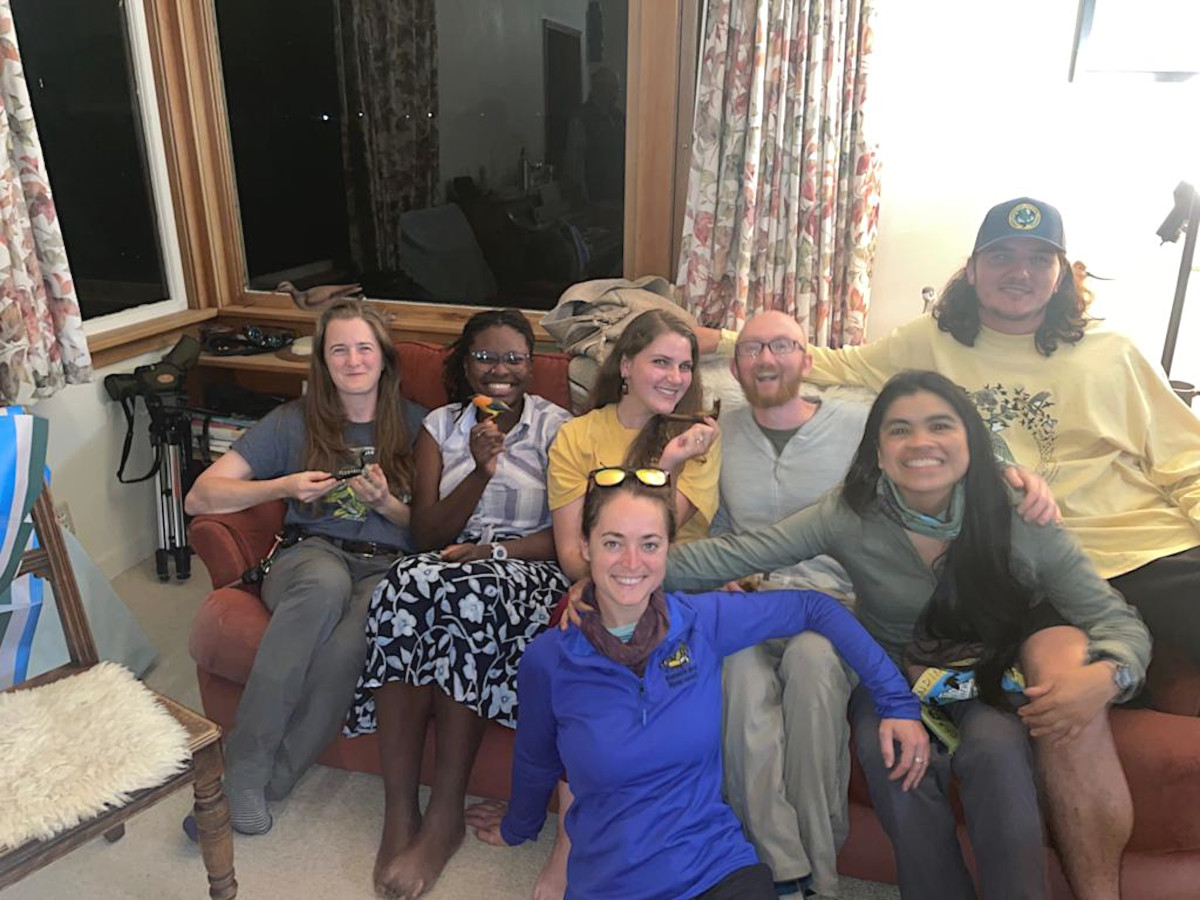
On Sunday, we drove back to the Upper Klamath, but not before stopping to sightsee along the way. Several stops at the redwood forests and the Pacific Ocean later, we got back home to several inches of snow on the ground. Our last week at the cabin was cozy; we kept the fire roaring out of necessity, but were also incredibly busy as we scrambled to pack up our things, pack up the cabin, complete data entry, and overall wrap up the banding season.
Goodbyes…And Appreciation
We began saying goodbye to various crew members, starting in California and ending at the airport where I bid adios to my Colombian friend and started the equally long journey home. All in all, my time at KBO was an incredible learning experience where I learned about myself as much as I did about banding; made lasting bonds with people I may have never encountered otherwise; and gained amazing insight into the world of banding and bird conservation.
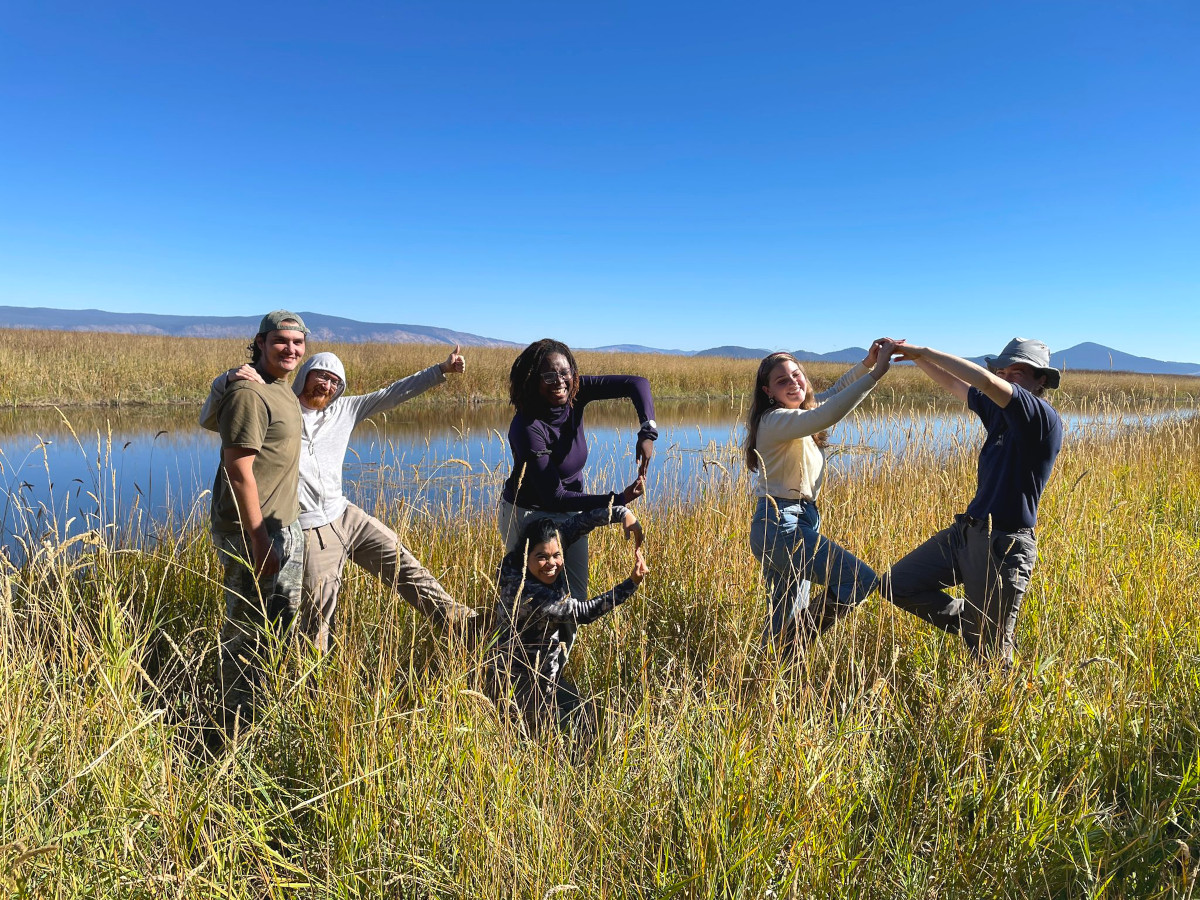
KBO was so welcoming, both the place and the people, and I look forward to going back someday; as they say, we are all KBO “famigos” now. Our trainer, Claire, was exactly the tough but compassionate teacher I needed. She has really helped me to be the best bander I can be. I’m especially excited to be home and to start applying everything I’ve learned to the study and conservation of my local birds. I have BirdsCaribbean to thank for this opportunity. Words can hardly express how grateful I am for the chance to intern at KBO last year, and I am so excited to see what comes next with this evolving Caribbean Bird Banding Network. Thank you, BirdsCaribbean and KBO!
Zoya is a conservation biologist with varied passions, including birds, the beach, and writing/editing. She recently completed her Master’s in natural resource management and has a love for coastal ecosystems, especially mangroves. Zoya is excited to use her bird banding experiences at KBO and elsewhere in the Caribbean to learn more about the understudied resident and endemic species in her home country, Grenada.
We are very proud of Zoya for successfully passing the rigorous NABC (North American Banding Council) exam and becoming a certified Bander. She is just one of three persons in the Caribbean who are now certified. All three received certification in 2022, as part of our new Landbird Monitoring Program which aims to build capacity for bird monitoring, banding, and MOTUS in the Caribbean. We thank the US Fish and Wildlife Service, Neotropical Migratory Bird Conservation Act Fund for support for this project.
